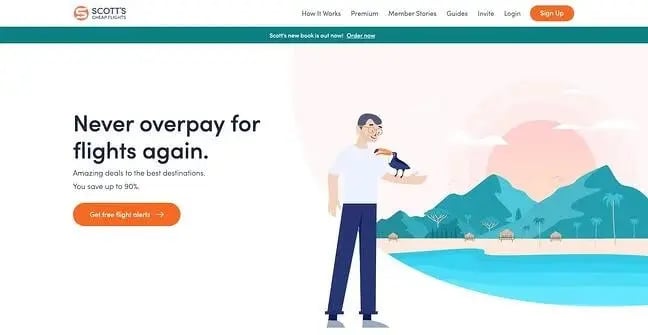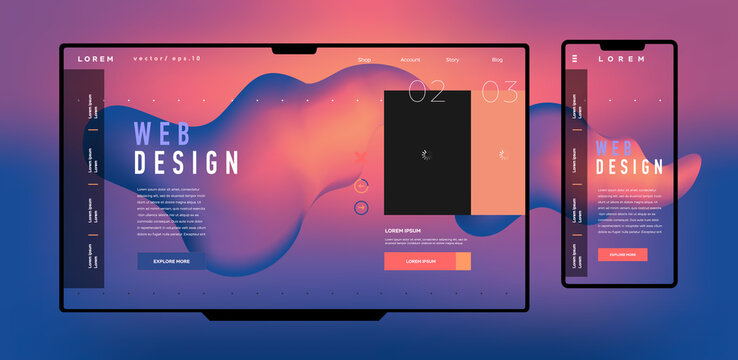Just how to Pick the Right System for Website Design
Just how to Pick the Right System for Website Design
Blog Article
The Power of User-Centered Site Layout in Growing Your Online Audience
Efficient style principles-- such as intuitive navigation and accessibility-- are crucial in promoting user contentment and loyalty. What methods can organizations take on to ensure their layouts resonate with users and eventually drive development?

Understanding User-Centered Design
User-Centered Layout (UCD) is an essential method to site advancement that prioritizes the demands, preferences, and behaviors of end customers throughout the style process. This technique stresses understanding users deeply-- through study approaches such as interviews, surveys, and usability screening-- to produce a website that reverberates with them. By integrating individual feedback at every phase, developers can guarantee that the end product straightens carefully with user assumptions.
UCD promotes repetitive style, where models are checked and refined based upon user communications and experiences. This cycle not only improves usability but likewise fosters a feeling of ownership among users, as they feel their input is valued and impactful. Furthermore, UCD helps determine possible obstacles and pain factors in the user trip, allowing designers to deal with these obstacles proactively.
Eventually, embracing UCD causes web sites that are much more instinctive, appealing, and efficient. By putting customers at the facility of the design process, organizations can develop electronic experiences that not just draw in yet additionally maintain their target market, driving greater satisfaction and loyalty. In an affordable on the internet landscape, this approach is vital for attaining sustained success.
Secret Concepts of Customer Experience
An effective customer experience (UX) rests on a number of crucial principles that assist the layout process and enhance communication between users and the site. Functionality is vital; the internet site has to be instinctive, permitting customers to browse conveniently and find info rapidly. This includes clear labeling and a logical structure that minimizes cognitive load.
Second of all, access plays an important function in guaranteeing that all users, regardless of their abilities or disabilities, can efficiently engage with the site. Integrating alt text for pictures, keyboard navigation, and display viewers compatibility promotes inclusivity.
Consistency is another essential concept. A cohesive layout language, from shade plans to typography, helps customers develop experience and trust with the internet site (Website Design). It also reinforces brand name identity
Moreover, responses systems are vital. Customers ought to receive prompt and clear reactions to their activities, whether with aesthetic hints or confirmation messages, which enhances their confidence in browsing the website.
Lastly, mobile responsiveness can not be neglected. With an enhancing variety of customers accessing internet sites by means of smart phones, a design that adapts flawlessly to various display sizes is important for preserving a favorable user experience.

Benefits for Online Interaction
Reliable online interaction provides numerous benefits that can considerably boost an internet site's overall efficiency - Website Design. By promoting purposeful interactions in between individuals and the web site, organizations can grow a devoted audience that returns with uniformity. Engaged individuals are most likely to share content, therefore increasing natural reach and attracting new site visitors via word-of-mouth promo
Boosted online involvement likewise results in boosted individual complete satisfaction. When individuals find an internet site that resonates with their requirements, they are extra inclined to discover its offerings completely, which can bring about higher conversion rates. Additionally, interesting content motivates individuals to spend more time on the website, decreasing bounce prices and positively influencing internet search engine ranking algorithms.
In addition, effective look here involvement provides vital insights into user choices and actions (Website Design). By analyzing user interactions, organizations can customize their web content and layout methods to fulfill the evolving expectations of their audience. This adaptive method not only improves involvement but likewise enhances the brand name's online reputation as receptive and user-centric
Inevitably, focusing on on the internet involvement via user-centered layout develops a thriving ecosystem where both the audience and the company benefit, causing continual development and success in the electronic landscape.

Strategies for Reliable Design
To make the most of the advantages of online interaction, using details strategies in website design is paramount. Intuitive navigation is vital; individuals must quickly discover information without complication. A well-structured menu, clear tags, and a rational pecking order improve the user visit site experience and minimize bounce rates.
Second, responsive design is important in today's multi-device atmosphere. Guaranteeing that a site adapts seamlessly to numerous display dimensions promotes availability, consequently fitting a wider audience. This adaptability not just improves user satisfaction yet additionally favorably impacts search engine positions.
Third, the use of visual hierarchy overviews individuals' attention to essential components, such as contact us to action (CTAs) Utilizing contrasting colors, differing font sizes, and strategic spacing can properly guide users towards desired actions, helping with better communication.
Additionally, applying constant branding across all web pages builds depend on and recognition. A cohesive shade system, images, and typography enhance brand name identity and produce you could try these out a professional look.
Lastly, maximizing loading rates is essential. Individuals are less likely to involve with a slow-loading site, making efficiency optimization a vital facet of effective layout. By incorporating these strategies, website designers can boost individual experience and inevitably grow their online target market.
Real-World Success Stories
Success tales in user-centered website layout illustrate the substantial benefits of prioritizing user experience. As a result, they experienced a 250% boost in on the internet donations, demonstrating exactly how an user-friendly layout can drive customer involvement and assistance.
An additional engaging instance is that of Airbnb, which made use of user-centered layout principles to improve their reservation process. By simplifying the individual journey and integrating individualized suggestions, they considerably minimized site abandonment rates. This concentrate on customer experience added to an earnings development of over 70% in a solitary year, emphasizing the relationship between well-designed interfaces and financial success.
In addition, the shopping titan, ASOS, carried out individual testing to refine their mobile application. By resolving individual pain points, they attained an amazing 30% increase in mobile sales. These instances highlight that buying user-centered style not only boosts individual fulfillment however additionally drives concrete company results, enhancing the important function of customer experience in accomplishing online development.
Conclusion
By focusing on customer demands and choices, companies can develop easily accessible and intuitive electronic experiences that promote commitment and drive conversions. The assimilation of user responses throughout the design process not only minimizes bounce rates yet likewise encourages exploration.
User-Centered Style (UCD) is a fundamental technique to site advancement that focuses on the demands, choices, and habits of end customers throughout the design process. By integrating customer comments at every stage, designers can make sure that the last item straightens closely with user assumptions.
An effective customer experience (UX) pivots on numerous vital concepts that assist the layout procedure and improve communication in between individuals and the web site.Success stories in user-centered web site style show the substantial benefits of focusing on individual experience. These instances highlight that investing in user-centered style not only enhances customer satisfaction yet likewise drives concrete business outcomes, enhancing the essential duty of individual experience in achieving on-line development.
Report this page